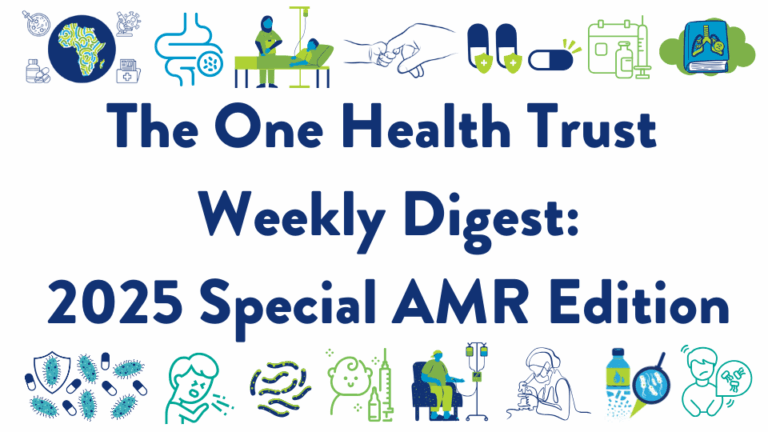September 05, 2018

New findings show how competition impacts resistance to malaria drugs. Scientists have developed a mathematical model that explores why antimalarial drug resistance develops more slowly in a high-transmission setting, and why, when a drug-resistant strain of malaria predominates in the host, competition quickens the spread of resistant strains. The study combined within-host factors in humans with between-host factors in the human-mosquito pair, using a nested model to analyze “whether within-host competition alone can inhibit the spread of resistance, whether competitive release can accelerate the spread of resistance, and how the net effect depends on the level of antimalarial drug use.” [EurekAlert, Emory eScienceCommons, PLoS]
Progress made towards a “universal” influenza vaccine. Researchers at University of Pennsylvania have used a new approach to create a “universal” flu vaccine that has demonstrated initial positive results. Based on modified messenger ribonucleic acid (mRNA) and targeting the stalk of the hemagglutinin, the experimental vaccine has produced a strong and sustained antibody titer in three mammal species: mice, rabbits, and ferrets. The next step is to test the vaccine’s effectiveness in non-human primates, followed by trials in humans. [Medical Xpress, Daily Mail, Nature Communications]
Temperature tracking used to predict transmission of mosquito-borne virus. Scientists in Australia have created a temperature-dependent model to map the geographical progression of Ross River virus over time and predict future spread of the disease in humans. Two mosquito species are responsible for most RRV transmission, and both have breeding cycles that are accelerated by increases in ambient temperature. The model uses temperature-dependent variables such as fertility, feeding, and lifespan. When mapped with human population data, the model accurately predicted the distribution of human cases. [EurekAlert, eLife]
Experts review diagnostic accuracy studies on extrapulmonary tuberculosis. An international team of experts reviewed 66 diagnostic accuracy studies in which the Xpert rapid diagnostic tool was compared to laboratory culture for people believed to have TB meningitis or pleural, lymph node, bone/joint, genitourinary, peritoneal, pericardial, or disseminated TB. Pooled Xpert sensitivity varied, depending on source of the specimen (31% in pleural tissue to 97% in bone or joint fluid); Xpert sensitivity was over 80% in urine and bone or joint fluid and tissue. The reviewers concluded that clinical judgement should be used to prescribe treatment if they believe the test result is a false negative, especially for TB meningitis. [EurekAlert, Liverpool School of Tropical Medicine, Cochrane]
Injectable two-drug regimen for HIV comparable to daily, oral three-drug regimen. A once-a-week injectable has been shown in a clinical trial to maintain viral suppression as well as the standard three-pills-a-day treatment. A long acting medication for HIV could benefit individuals by replacing their burdensome daily pill regimens and reducing the emergence of drug resistance which occurs when doses are missed. Transmission of HIV could decrease as more people with HIV adopt the injectable, and drug resistant HIV cases could be less prevalent. [Science, VIIV Healthcare]
Chinese government fails to share its H5N9 specimens, threatening US pandemic preparedness. Despite repeated requests, the Chinese government has withheld samples of H7N9 avian flu from the US Centers for Disease Control and Prevention (CDC), delaying the development of a vaccine against the lethal strain of virus to which North Americans have no immunity. The sharing of samples is described in the World Health Organization report the “Pandemic influenza preparedness Framework for the sharing of influenza viruses and access to vaccines and other benefits,” but the, but the CDC has waited over a year and speculate this may be a result of US-China trade wars. [New York Times, WHO]
US public health officials alarmed by steep and sustained increase in sexually transmitted infections. In 2017, the number of recorded new cases of gonorrhea, chlamydia, and syphilis was 2.3 million – a record high. Four percent of gonorrhea cases in 2017 were resistant to azithromycin, up from 1% in 2013. Between asymptomatic infections, harm to women’s reproductive symptoms, and increasing resistance to antibiotics, the rapidly growing number of sexually transmitted infections has signaled a need for greater prevention programs. The US Centers for Disease Control and Prevention recommends that women under 25 be screened every year for chlamydia and gonorrhea, that screenings for sexually transmitted infections occur during healthcare appointments, and that sexually active people use condoms. [New York Times, CIDRAP, CDC]
Chagas disease has spread beyond known endemic areas. The presence of Chagas disease outside of known endemic areas has prompted the American Heart Association (AHA) to issue a comprehensive report for healthcare providers who are unfamiliar with its presentation. Although initial infection is often asymptomatic, approximately 20-30% of patients will develop cardiac or other systemic sequelae later in life. The US Centers for Disease Control and Prevention, which considers Chagas a neglected parasitic disease, estimates that 300,000 people in the US are infected with Trypanosoma cruzi, including many individuals unaware of their infection. One tenth of this number are women of childbearing age. Women who have lived in Mexico, Central America, and South America are at greatest risk for Chagas disease and should be screened for infection before or during pregnancy due to the risk of transmission during childbirth. [American Heart Association, EurekAlert, Circulation, CDC]
Bacteria common in hospital-acquired infections found resistant to carbapenems. Acinetobacter nosocomialis, a healthcare-infection causing bacteria has shown increasing antibiotic resistance in Taiwan. In a study on the mechanisms of susceptibility, over 92% of the samples were found to be resistant to amikacin. Using a total of 111 samples of A. nosocomialis from blood infections in two Taiwanese hospitals spanning approximately four years, the research aims to deepen knowledge of the molecular epidemiology of imipenem-nonsusceptible strains isolated from bloodstream infections. [Clinical Microbiology and Infection]
Reducing instances of Tuberculosis through surveillance of laboratory data in South Africa. Boston Medical Center researchers used routinely collected data to map fluctuations in drug-resistant tuberculosis in Western Cape province. Using data from a five-year span starting in 2008, researchers created a heat map of the region by prevalence. Of the diagnoses during this time frame, 4.6% of the cases were multidrug resistant. Visualizing the data with other information serves to both identify high-burden areas and create prevention/control methods specific to the region. As a result, researchers aim to reduce incidence of tuberculosis through early treatment. [EurekAlert, PLOS Medicine]
Image: Three species of kissing bugs, in PLoS Neglected Tropical Diseases [CC License]











